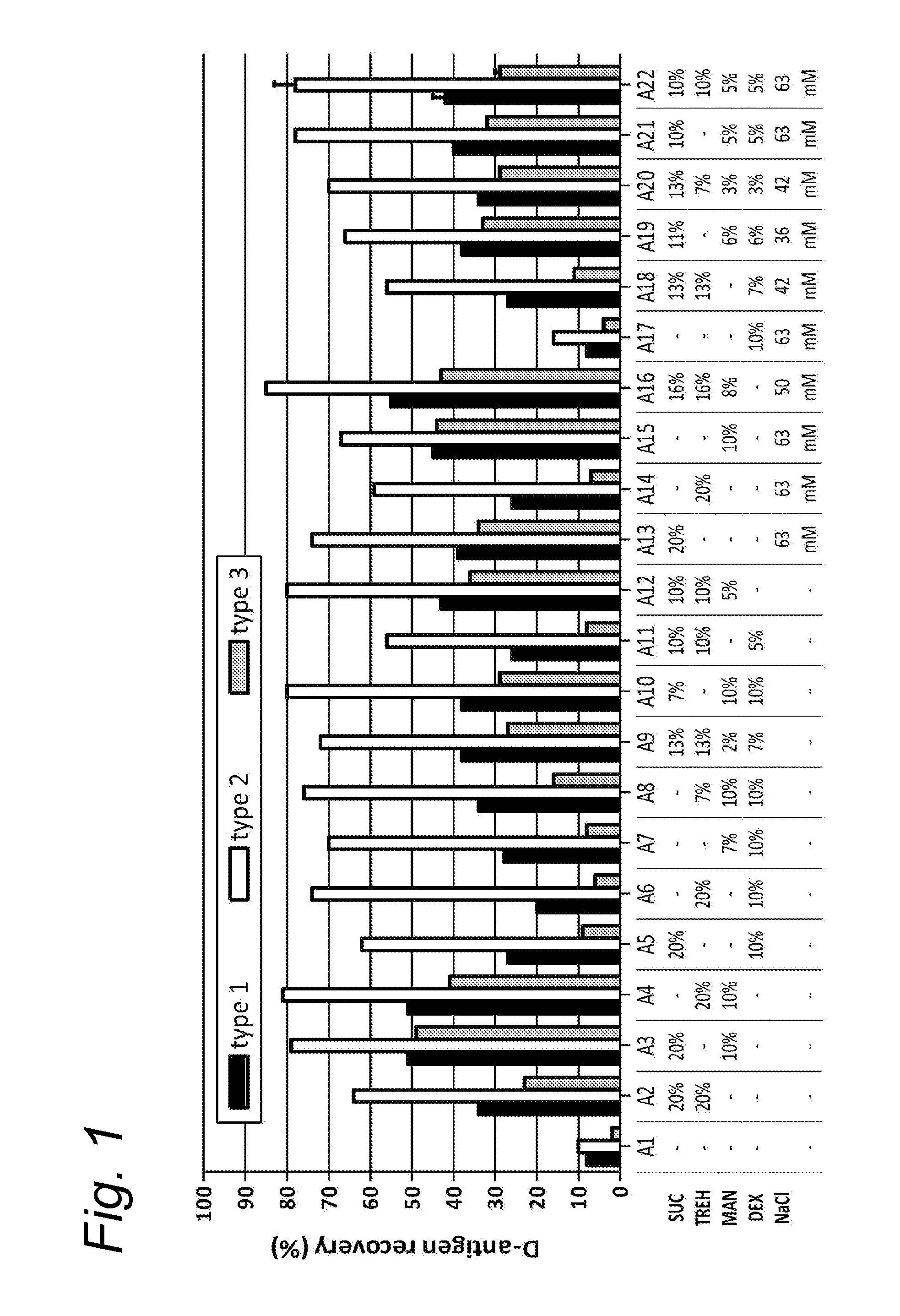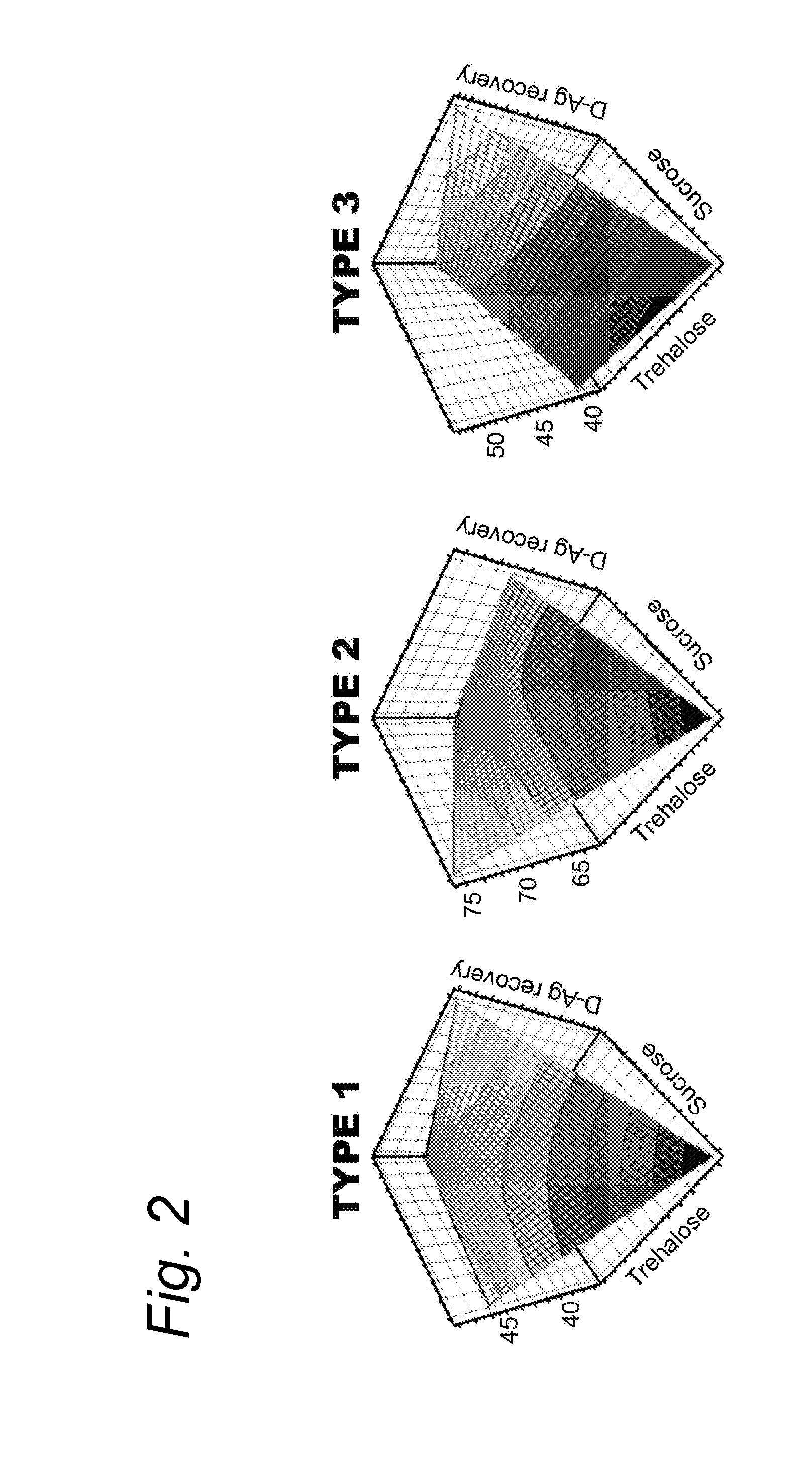Methods and compositions for stabilizing dried biological materials
a biological material and composition technology, applied in the direction of biocide, inorganic non-active ingredients, antibody medical ingredients, etc., can solve the problems of hindering scientific approach and research, few biological compounds are sufficiently stable in liquid environment, and long-term storage of biological compounds is a unique challenge, so as to minimize the loss of activity
- Summary
- Abstract
- Description
- Claims
- Application Information
AI Technical Summary
Benefits of technology
Problems solved by technology
Method used
Image
Examples
examples
1. Materials and Methods
1.1 Materials
[0092]The trivalent inactivated polio vaccine (Salk-IPV), containing the inactivated Mahoney strain for type 1, MEF for type 2 and Saukett for type 3, was obtained from the process development department of the RIVM-Vaccinology (Bilthoven, The Netherlands). The Salk-IPV trivalent bulk (10×) was formulated as a ten times concentrated 40-8-32 DU / single human dose (1 ml). The concentration of the IPV 05-126B bulk that was used in this study was determined at 411-90-314 DU / ml with the QC-ELISA as described by Westdijk et al. [6].
[0093]The excipients sucrose, D-sorbitol, D-trehalose dihydrate, D-glucose monohydrate, mannitol, L-glutamic monosodium salt monohydrate (referred to as glutamate, sodium glutamate, monosodium glutamate or MSG herein), myo-inositol, D-raffinose, hydroxy ethyl starch, glycine, L-proline, L-leucine, calciumchloride dihydrate, maltitol, magnesiumchloride hexahydrate, lithium chloride, and ovalbumin were all purchased from Sigma ...
PUM
| Property | Measurement | Unit |
|---|---|---|
| temperature | aaaaa | aaaaa |
| temperature | aaaaa | aaaaa |
| temperature | aaaaa | aaaaa |
Abstract
Description
Claims
Application Information
 Login to View More
Login to View More - R&D
- Intellectual Property
- Life Sciences
- Materials
- Tech Scout
- Unparalleled Data Quality
- Higher Quality Content
- 60% Fewer Hallucinations
Browse by: Latest US Patents, China's latest patents, Technical Efficacy Thesaurus, Application Domain, Technology Topic, Popular Technical Reports.
© 2025 PatSnap. All rights reserved.Legal|Privacy policy|Modern Slavery Act Transparency Statement|Sitemap|About US| Contact US: help@patsnap.com



